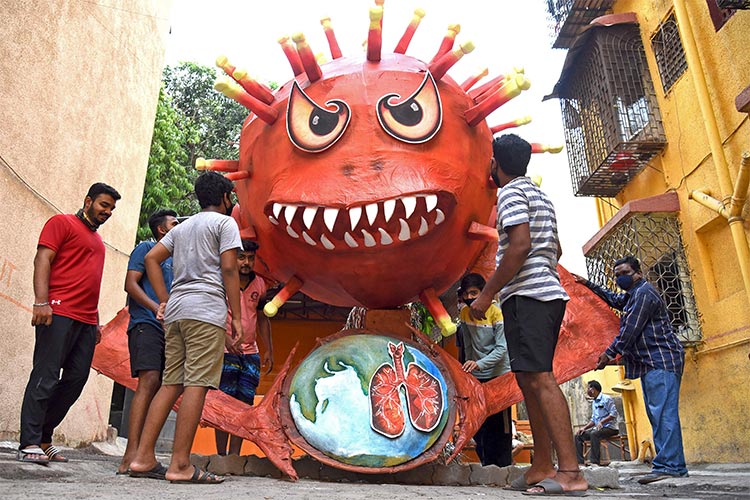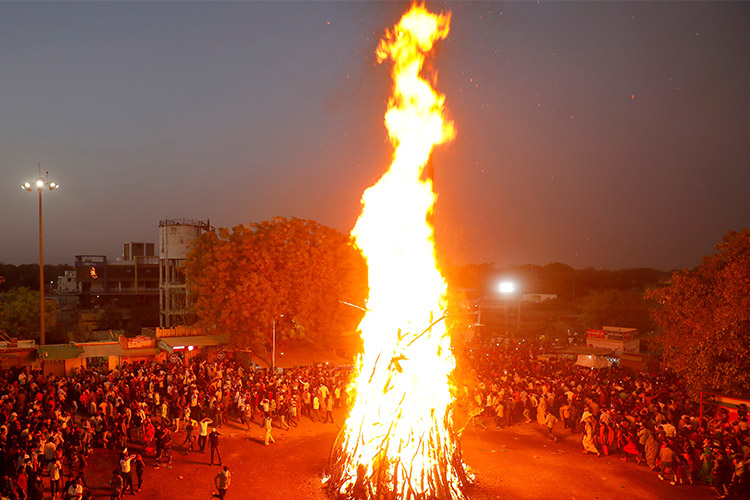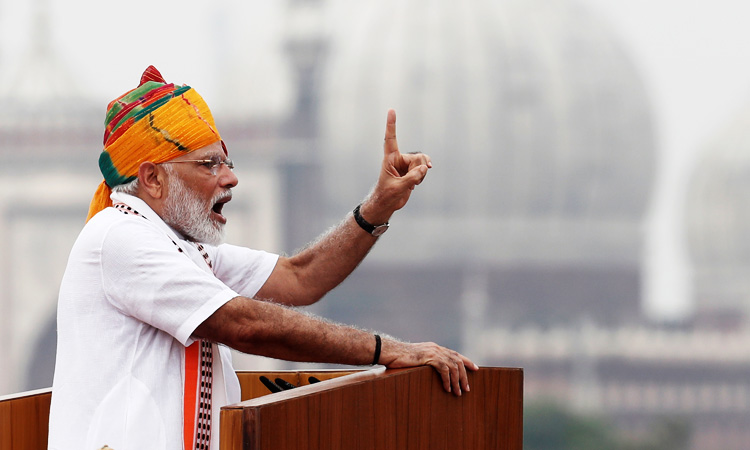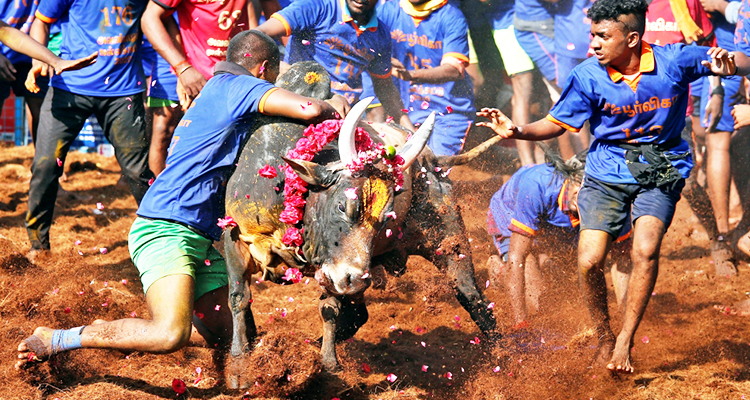Seven fun facts about the fabulous, colourful Holi festival

Revellers play with 'gulal,' a coloured powder used in Holi celebrations. AFP
Gulf Today Report
Today, March 29, marks the Hindu festival of colours called Holi.
You’ve probably seen actors in Bollywood movies smearing each other with coloured powder and playing with water guns, famously involving song and dance.
The festival is primarily celebrated in India and its neighbouring country Nepal, and involves throngs of people enthusiastically getting immersed in bright colours and water.
You may have wondered what the significance behind this annual riot of colours is, or where the name comes from.
Here’s a primer on the festival by The Independent.
1. It’s a celebration of good triumphing over evil
The lively festival is a celebration of the beginning of spring after a long winter, symbolic of the triumph of good over evil.
Holi is a national holiday in India and Nepal held to coincide with the last full moon day of winter, according to the Hindu lunar calendar.

The religious origin centres around the legend of Holika (hence the name Holi).
The sister of the demon king Hiranyakashipu, Holika was killed in a fire after she attempted to murder her nephew Prahlad, who prayed to the god Vishnu and was saved from the fire.
2. It starts with bonfires
Symbolising the fire that killed Holika, in India the festival starts the night before Holi with the lighting of bonfires (called Holika Dahan).
People gather around the fires — sometimes topped with an effigy of Holika — celebrating the coming of spring (the heat of the flames is said to represent the onset of warmer weather).
3. The colours symbolise equality
Also known as the ‘festival of colours,’ Holi honours the vibrant hues of spring, and the bright powders and colour waters symbolise flames as well, but there’s a deeper meaning behind why people cover each other with pigmented ‘abir’ powder and ‘gulal’ paste.
The colours act as a great leveller, making everyone equal (or equally messy) no matter their caste, culture or religion.
4. Food is an important part of the celebrations
No party would be complete without a delicious spread, and during Holi it’s all about sweet treats.

To fuel all that energetic paint throwing, big batches of desserts are served up, such as Gujiya, flaky pastry parcels filled with dried fruit, served with sugar syrup; malpua, deep-fried mini pancakes; and thandai, a sweet, milky drink flavoured with the likes of cardamom, saffron, fennel seeds and rosewater.
5. As is a certain stimulating drink
Bhang is the name of a traditional Indian intoxicating drink often consumed during Holi, mixed with creamy lassi or the aforementioned thandai.
6. Nepal has its own Holi traditions
In Nepal, Holi begins when a ceremonial bamboo pole called a ‘chir’ is erected in capital Kathmandu.
Strips of cloth are tied to the pole as good luck charms, and it is later burned in a bonfire.
As well as the usual paint and powder, in Nepal people also pelt each other with water balloons called ‘lolas.’
7. It’s celebrated all over the world
While the biggest celebrations take place in India and Nepal, people around the world gather each year to mark the festival, some for religious reasons, others just for fun, from Berlin to Barcelona, Singapore to Suriname (pandemic restrictions allowing).







